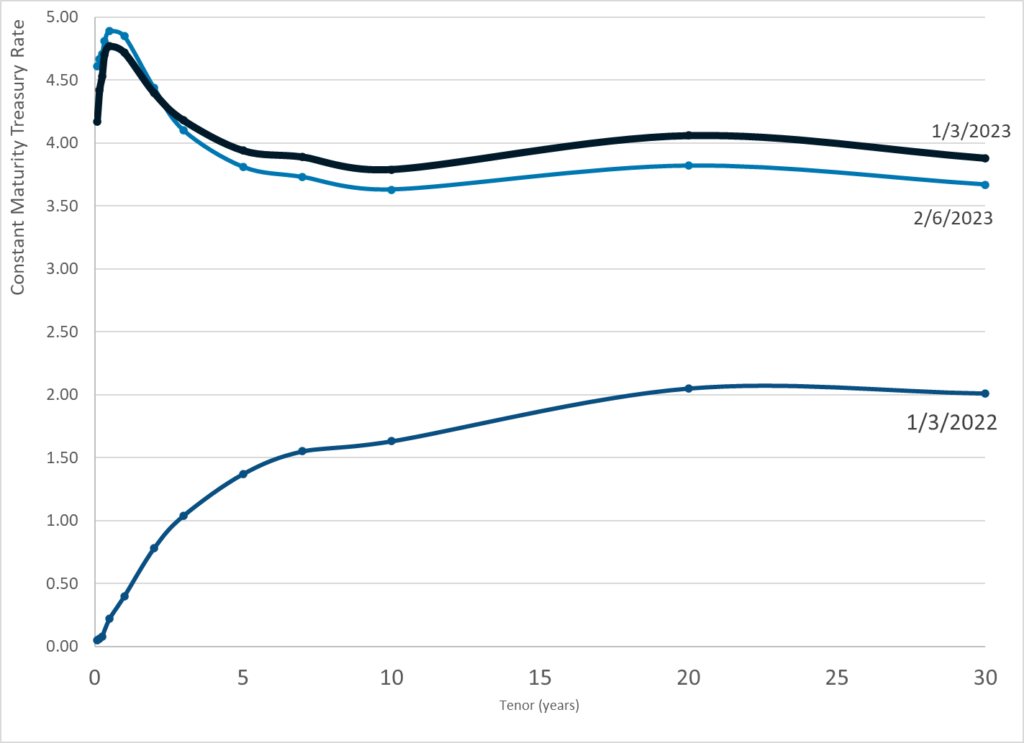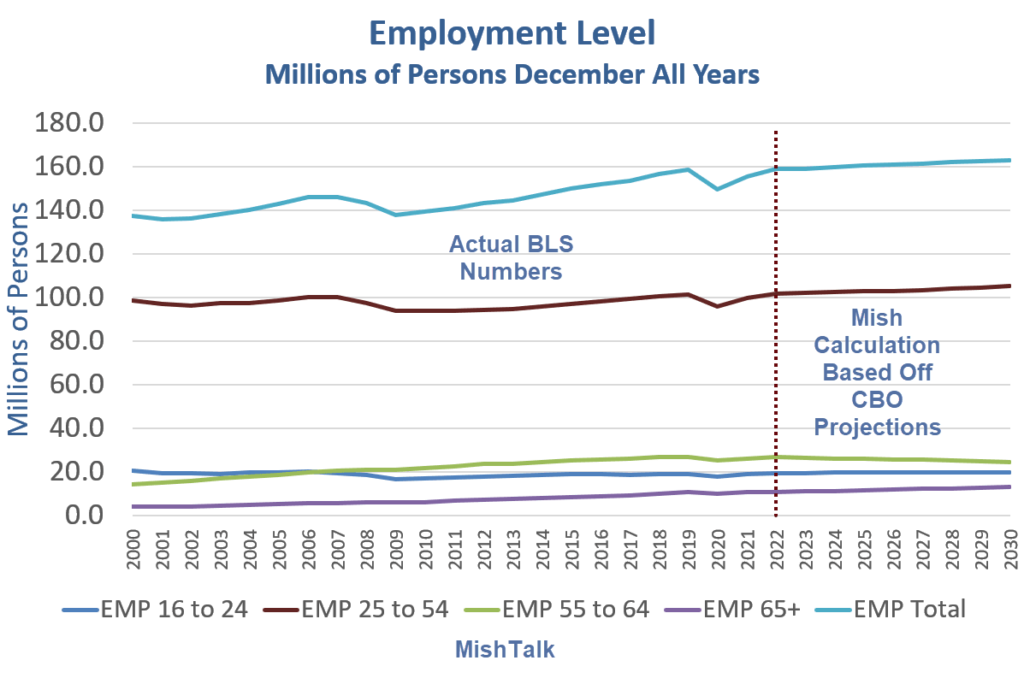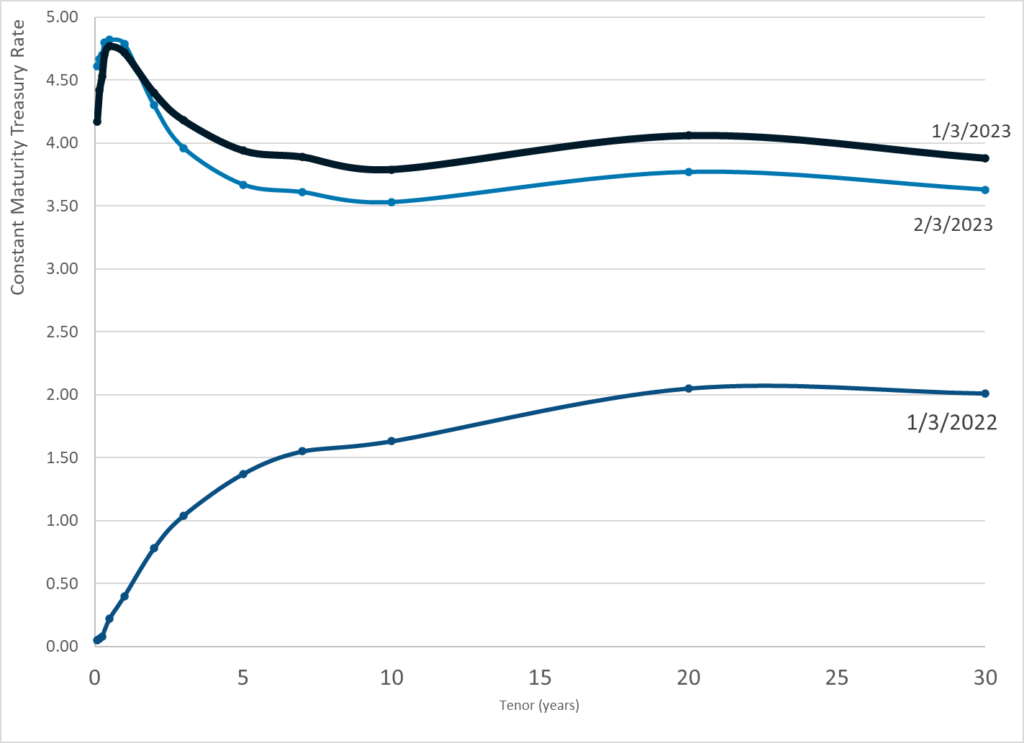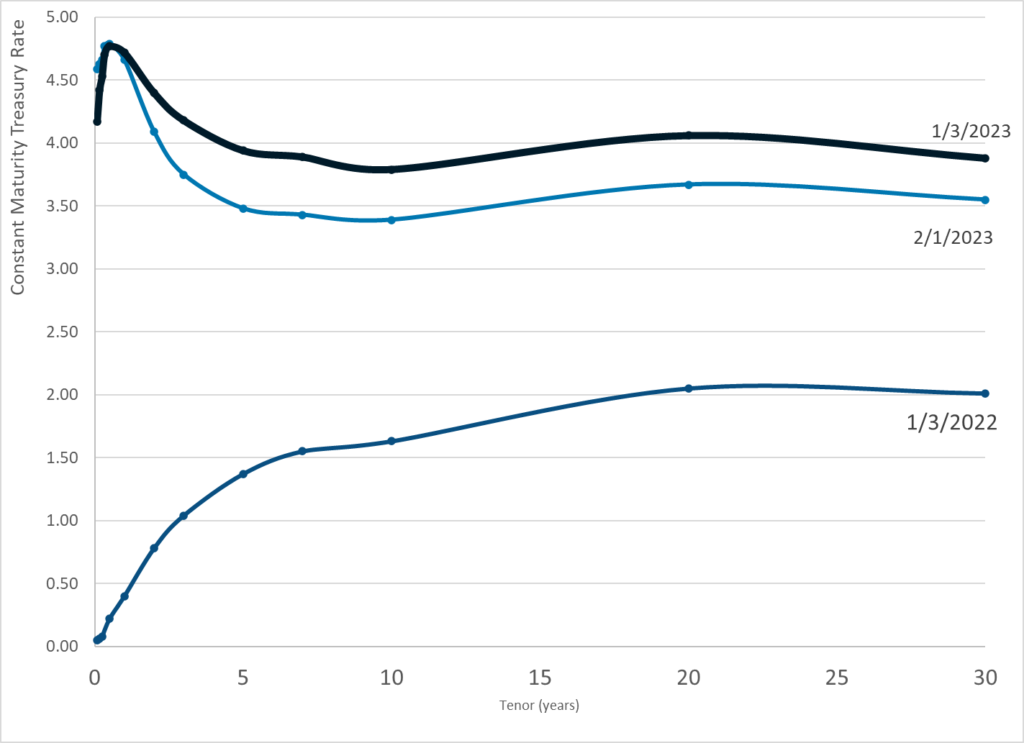Graphic:

Publication Date: 6 Feb 2023
Publication Site: Treasury Dept
All about risk
Graphic:

Publication Date: 6 Feb 2023
Publication Site: Treasury Dept
Link: https://www.pionline.com/washington/republican-led-house-committee-launches-anti-esg-working-group
Excerpt:
Congressional Republicans on Friday took another step in their quest to dismantle the Biden administration’s environmental, social and governance rule-making initiatives.
The House Financial Services Committee has formed a working group to “combat the threat to our capital markets posed by those on the far-left pushing environmental, social and governance proposals,” the committee’s Chairman Patrick McHenry, R-N.C., announced.
The group will be led by Rep. Bill Huizenga, R-Mich., and include eight other Republican committee members.
Among its priorities, the group will examine ways to “rein in the SEC’s regulatory overreach;” reinforce the materiality “standard as a pillar of the nation’s disclosure regime;” and hold to account market participants who “misuse the proxy process or their outsized influence to impose ideological preferences in ways that circumvent democratic lawmaking,” according to a news release.
“This group will develop a comprehensive approach to ESG that protects the financial interests of everyday investors and ensures our capital markets remain the envy of the world,” Mr. McHenry said in the news release. “Financial Services Committee Republicans as a whole will continue our work to expand capital formation, hold Biden’s rogue regulators accountable, and support American job creators.”
Author(s): Brian Croce
Publication Date: 3 Feb 2023
Publication Site: Pensions & Investments
Link: https://jacobin.com/2023/02/france-emmanuel-macron-pension-reform-protest-strike-welfare
Excerpt:
According to police figures, Tuesday’s nationwide protests marked the largest single-day union-backed demonstration in France in thirty years. Some 1.272 million turned out to the streets. That’s more than the already-impressive January 19 turnout, it’s more than any of the single-day peaks of the 2010 and 2003 movements over retirement reforms — it even topped the height of the legendary 1995 protests.
And there’s more to come. The united union coalition has called for two further days of strikes and protest: Tuesday, February 7, and Saturday, February 11. “Until then,” the coalition has also called on the public to “multiply actions, initiatives, meetings, and general assemblies across the country, in workplaces [and] at places of study, including through strikes.”
After two successful national mobilizations, the movement seems to be entering a new phase. Public opinion is clearly on its side — and yet, the government isn’t budging on the proposed hike in the retirement eligibility age from sixty-two to sixty-four. Clearly, it’s going to take more for organized labor to win this battle.
….
Clearly, the strike calls over pension reform have resonated beyond organized labor’s traditional bastions of support in the public sector: namely, schools, health services, and transit networks (the national SNCF rail company and the Paris metro network). Workers in all these sectors have walked off the jobs, but so have others in the private sector. The General Confederation of Labour (CGT) has shared a list of strikes on January 31 that illustrates this point: five thousand strikers at Airbus; a walkout from 90 percent of the staff at a FNAC department store outside of Toulouse; a strike from 80 percent of the workers at a LU Mondelēz factory in Normandy, etc.
Author(s): Cole Stangler
Publication Date: 2 Feb 2023
Publication Site: Jacobin
Graphic:

Excerpt:
If you work one hour, you are employed. If you don’t have a job and fail to look for one, you are not considered unemployed, rather, you drop out of the labor force.
Looking for job openings on Jooble or Monster or in the want ads does not count as “looking for a job”. You need an actual interview or send out a resume.
These distortions artificially lower the unemployment rate, artificially boost full-time employment, and artificially increase the payroll jobs report every month.
Q&A What’s Going On?
Q: Hey Mish, What’s Going On?
A: People are taking on second part time jobs to make ends meet. But full time employment is stagnant no matter how one slices and dices the revisions.
Author(s): Mike Shedlock
Publication Date: 3 Feb 2023
Publication Site: Mish Talk
Graphic:

Publication Date: 3 Feb 2023
Publication Site: Treasury Dept
Link: https://www.thinkadvisor.com/2023/02/01/fight-to-rename-medicare-advantage-gets-new-push/
Excerpt:
Rep. Mark Pocan and two colleagues are reviving a fight to take “Medicare” out of the name of the Medicare Advantage program — and, this time, they have a YouTube that looks like a parody of a Medicare Advantage TV ad.
The Wisconsin Democrat introduced the new version of the Save Medicare Act bill today, together with Reps. Ro Khanna, D-Calif., and Jan Schakowsky, D-Il..
The sponsors are promoting the position that “only Medicare is Medicare,” and that a Medicare Advantage plan may fail to provide the care that an older Medicare enrollee might need.
….
The bill would rename the Medicare Advantage program and prohibit Medicare Advantage plans from using the word “Medicare” in plan titles or ads.
The Pocan-Khanna-Schakowsky bill is a new version of H.R. 9187, a bill that Pocan and Khanna introduced in the 117th Congress. That bill had a total of four co-sponsors, all Democrats.
H.R. 9187 died in the House Energy and Commerce Committee and the House Ways and Means Committee at a time when Democrats controlled the House.
Author(s): Allison Bell
Publication Date: 1 Feb 2023
Publication Site: Think Advisor
Link: https://www.dw.com/en/france-pension-reform-plans-trigger-public-backlash/a-64513082
Excerpt:
A reform of France’s pension system is set to push up the minimum retirement age from 62 to 64. The government has said the measures are needed. But most French, and even a number of economists, disagree.
The demonstration on a recent Thursday afternoon could be a bad omen for President Emmanuel Macron. About 80,000 people gathered in Paris, and over 1 million across France — more than at any other French protest in over a decade. They were there to show their opposition to the government’s pension reform plans, which even some economists disapprove of.
Protesters in the street leading from Place de la Republique to Place de la Bastille in northeastern Paris were holding up placards saying things like “I love my pension” and “This [reform] is not inevitable, it does not create social justice.”
….
But the government has said the reforms are necessary to save France’s pay-as-you-go system, where workers pay for pensions through their levies. “The ratio of workers to pensioners is going down and that is threatening our system. With this project, we’ll guarantee the future of our retirement model,” Prime Minister Elisabeth Borne said before the Senate in mid-January.
As opposed to certain other European countries, France’s pension system does not include any capital-funded elements. It comprises general branches for private employees and public servants, and 27 so-called special pension schemes for, for example, ballet dancers or police officers that benefit from an earlier retirement.
The government now aims to increase the system’s overall minimum retirement age from 62 to 64 years by 2030. And from 2027 on, people will need to work for 43 years — instead of the current 42 — to receive a full-rate pension.
Macron’s plans would maintain an earlier retirement for people who started working at a young age and preserve certain special pension schemes. Others, such as the plans for metro drivers in Paris, are to be cut. The government also aims to increase the minimum pension by about €100 ($108) to €1,200 per month.
Money is, of course, Macron’s main argument. The reform is based on a report by a government-mandated expert committee that predicts pension payments will amount to up to 14.7% of GDP in 2032, instead of the current 13.8%.
Author(s): Lisa Louis
Publication Date: 30 Jan 2023
Publication Site: DW
Link: https://jacobin.com/2023/01/republicans-debt-ceiling-shock-doctrine-spending-cuts
Excerpt:
The debt ceiling is normally a dull topic, and many have understandably neglected to follow along. To recap, the debt ceiling is the artificial cap Congress places on the amount of money the government can borrow. As Secretary of the Treasury Janet Yellen and others have pointed out, there is little practical reason for the debt ceiling to exist at all. From a technical point of view, it is a formality to authorize the Treasury to pay bills the government has already incurred. Through creative accounting, the Treasury can keep paying for a few more months, and then it will have to stop unless Congress votes to raise the debt ceiling.
All sides agree that the US government deliberately defaulting on debts would be the financial equivalent of an atom bomb, causing immediate painful shocks across the world economy and unpredictable long-term effects. In order to avoid this scenario, voting to raise the debt ceiling is usually a matter of course — though the number of near and actual government shutdowns from Congress playing chicken with the ceiling have increased in recent decades.
But it might be different this time. As Politico reported last week, a number of former government officials who negotiated during previous standoffs over the debt ceiling think there’s much less room for a negotiated settlement this year.
The main reason is that, at least on the surface, House Speaker Kevin McCarthy is in a weak position, effectively held hostage by conditions that were imposed on him by the most extreme members of the House Republican conference during his election to speaker. Those conditions specifically require significant spending cuts in exchange for raising the debt ceiling.
….
Democrats also argue that though Republicans insist on reducing spending, they have refused to make specific demands for what they want cut. Here is where The Shock Doctrine might provide a hint of what’s to come. The idea of privatizing Social Security has been “lying around” since George W. Bush’s presidency. Joe Biden himself has a long, well-documented history of trying to cut Social Security and Medicare, though in public statements since 2020 he has consistently said he would not agree to do so.
Kevin McCarthy and other Republicans have repeatedly floated the idea of cutting the popular programs over the past year. While McCarthy appeared to abruptly back off the idea of cutting Social Security and Medicare as part of the debt ceiling negotiations on Sunday, his ambiguous promise to “strengthen” the programs without specifying what that means leaves plenty of room for privatization.
Author(s): Ben Beckett
Publication Date: 31 Jan 2023
Publication Site: Jacobin
Link: https://www.city-journal.org/fed-goes-underwater
Excerpt:
Before new trillion-dollar federal spending bonanzas became a regular occurrence, the Federal Reserve’s announcement that it lost over $700 billion might have garnered a few headlines. Yet the loss met with silence. Few Americans have noticed the huge increase in both the scale and the scope of the central bank or the dangers that it poses to the American economy. As Fed-driven inflation becomes the Number One political issue in America, that will change.
The Fed’s losses owe to a shift in the way it does business. Before the 2008 financial meltdown, the central bank tried to control interest rates by buying and selling U.S. bonds. A few billion in purchases or sales could move the whole economy, and this meant that the Fed, which operates much like a normal bank, could keep a relatively small balance sheet of under $1 trillion.
Since the financial crisis, the Federal Reserve, like other developed-world central banks, has used a different playbook. It provides enough funds to satiate the entire banking world, and it seeks to adjust the economy by paying banks more or less interest to hold those funds. These payments keep private-sector interest rates from dropping too low. When it first undertook this “floor” experiment, the Fed’s balance sheet exploded to more than $4 trillion. After the Covid pandemic, it approached $9 trillion.
A larger balance sheet means greater risks. And the Fed has added to that risk by purchasing longer-duration assets. Pre–financial crisis, the Fed bought mainly short-term federal debt. Only about 10 percent of all the U.S. bonds owned by the central bank lasted longer than ten years. Now, that figure has risen to 25 percent.
Author(s): Judge Glock
Publication Date: Winter 2023
Publication Site: City Journal
Graphic:

Publication Date: 1 Feb 2023
Publication Site: Treasury Dept
Graphic:
Publication Date: 31 Jan 2023
Publication Site: Treasury Dept